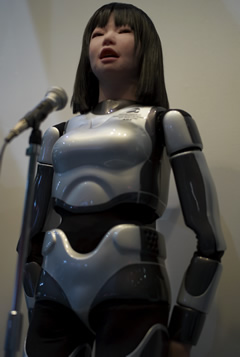Yamaha introduced its Disklavier piano way back in 1986. The Disklavier is a Yamaha piano with a built-in playback and recording system. When playing back the recording, the keys are pressed down, much like a player piano, so you hear essentially the same performance that was recorded on the same or similar piano. Because the performance is stored as a MIDI file, you could play a tune on a Disklavier in one city and have it play back—live or delayed—on another Disclavier in another city.
Recently, Yamaha has touted the benefit of this system for parents, by referring to the recordings as a lifelog. You could capture every performance of your child from the very first piano lesson to however far your child might progress on the instrument. MIDI files are tiny, so you could easily store a lifetime of practice sessions, lessons learned, and accomplished performances onto a single disk drive.
At this year’s CEATEC tradeshow, Yamaha added yet another twist to the technology. The company showed a prototype HRP-4C humanoid robot that sings in sync with a Disklavier piano performance. It not only sings—it has realistic facial expressions that mimic quite persuasively the human face. I spoke with Masahiro Koyama, Ph. D., who works for the Center of Advanced Sound Technologies in Tokyo. He said the facial expressions are based on what a face and mouth would look like when those particular sounds are produced.
There are no immediate plans to commercialize the singing robot, which uses Yamaha’s proprietary Vocaloid vocal-processing technology to create the lifelike singing voice (here’s a YouTube link to the performance at the booth). Cover bands across the world can rest easy, at least for the time being.
